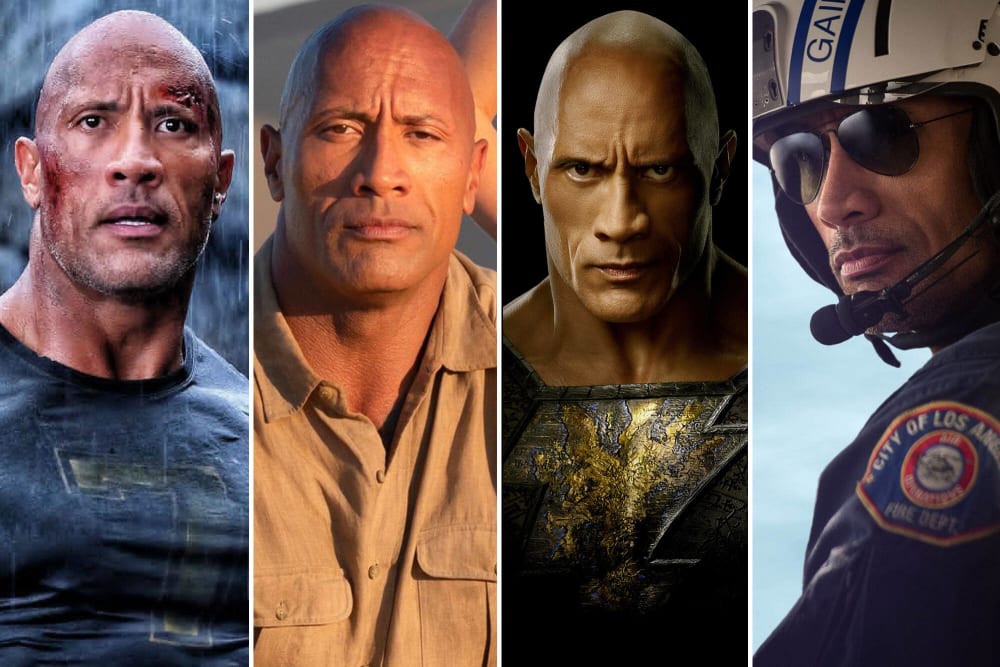
A history of Hollywood's greatest skyscraper films
Dwayne “The Rock” Johnson has gone up against a wide array of opponents in his acting career. Giant animals, Dominic Toretto’s gang, prehistoric beasts, Cobra, Christopher Walken and, scariest of all, the National Football League. But in his new film, he joins a cinematic tradition dating back to the 1930s, when he goes up against a skyscraper itself. Hollywood has loved tall buildings for almost as long as tall buildings have existed, so let’s look back at the history of Hollywood and skyscrapers.
"King Kong" (1933, 1976 and 2005)
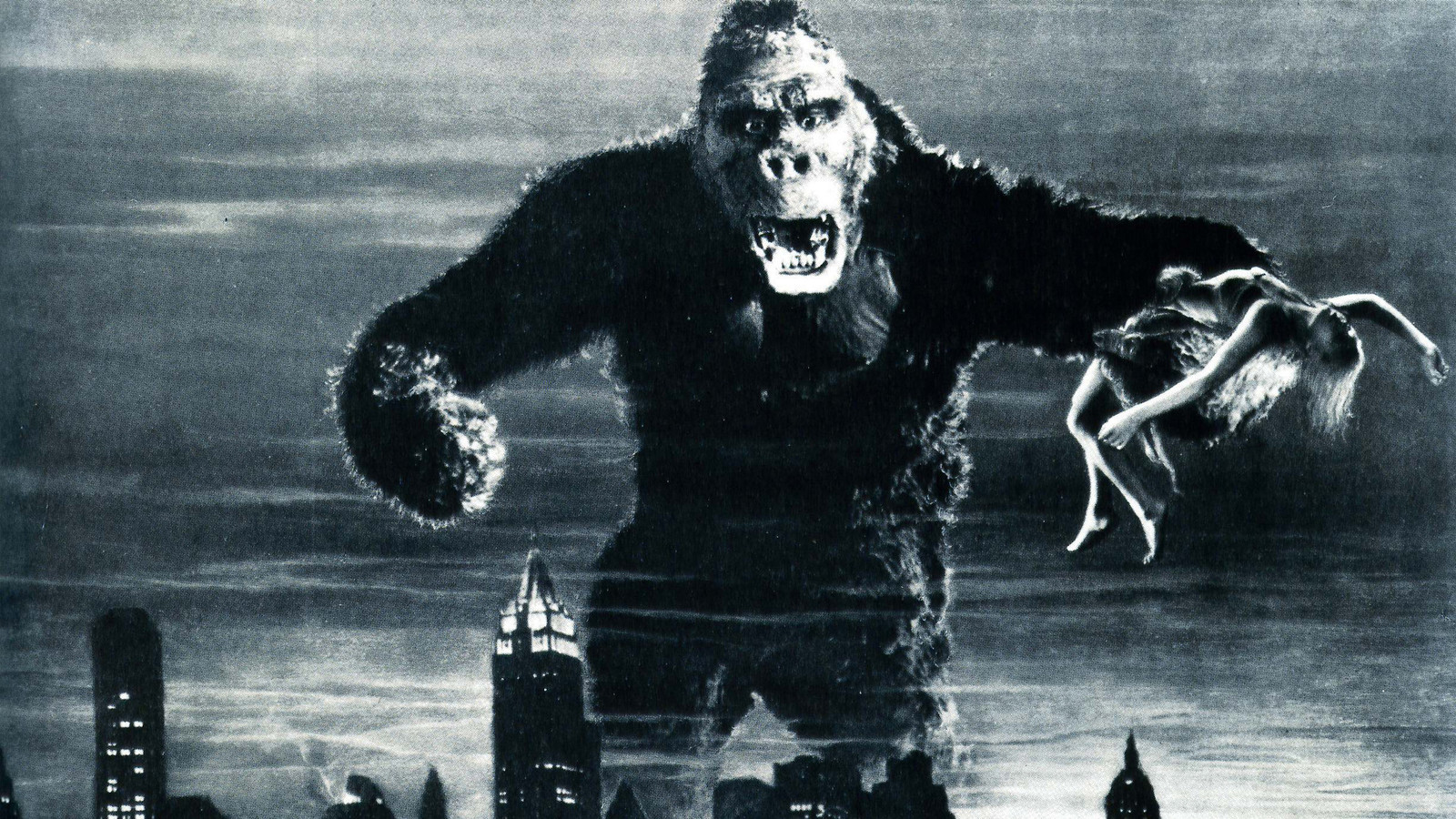
Aside from the recent "Skull Island," every version of the King Kong story ends with him scaling a skyscraper, beautiful woman in hand, before being killed by planes. The 1933 edition features a fight on the top of the Empire State Building, then brand-new and the tallest building in the world. It’s an ultra-modern edifice to capitalism, the ultimate counterpoint to Kong’s home on the primitive Skull Island. There’s also some irony in Kong climbing to the spire and fighting with planes, as the top of the Empire State was originally designed to be a dock for airships. It was terribly dangerous and failed miserably. The 1976 version uses the World Trade Center, perhaps because it was newer and taller, though the movie curiously claims that Kong climbs the WTC because it matches the terrain of his home.
Finally, Peter Jackson’s 2005 remake goes back to the Empire State, because it’s a homage to the original, and because you simply couldn’t have the World Trade Center in your movies for a few years after 9/11. This scene from "Deep Impact," a movie from three years earlier, looks horribly jarring. "Zoolander," which came out on Sept. 28, 2001, digitally removed the Towers from its NYC skyline shots (which is different from "Zoolander 2," which the filmmakers want to digitally remove from our memories). 2002’s "Spider-Man" removed a scene where Spidey catches a helicopter between the Towers and ditched the posters that featured the WTC. "Men In Black 2" changed the climactic fight from the WTC to the Statue of Liberty and removed the Towers from scenes in the original film. Even innocuous films like "Stuart Little 2" and "Home Alone 2" went back and removed the towers.
"Man On Wire" (2008)

This documentary about daredevil Philippe Petit and his attempt to wire walk between the Twin Towers came out in 2008, perhaps enough years after 9/11 that it wasn’t immediately painful. But also, the stunt is really a celebration of the World Trade Center, as the majesty of the spectacle makes the whole affair both dangerous and beautiful. In addition, all the scheming and cloak-and-dagger activity just to gain access to the roof feels like a heist film. The team battles the building but in order to champion it, not destroy it. A fictionalized version of the story came out in 2015 starring Joseph Gordon-Levitt called "The Walk."
"Die Hard" (1988)
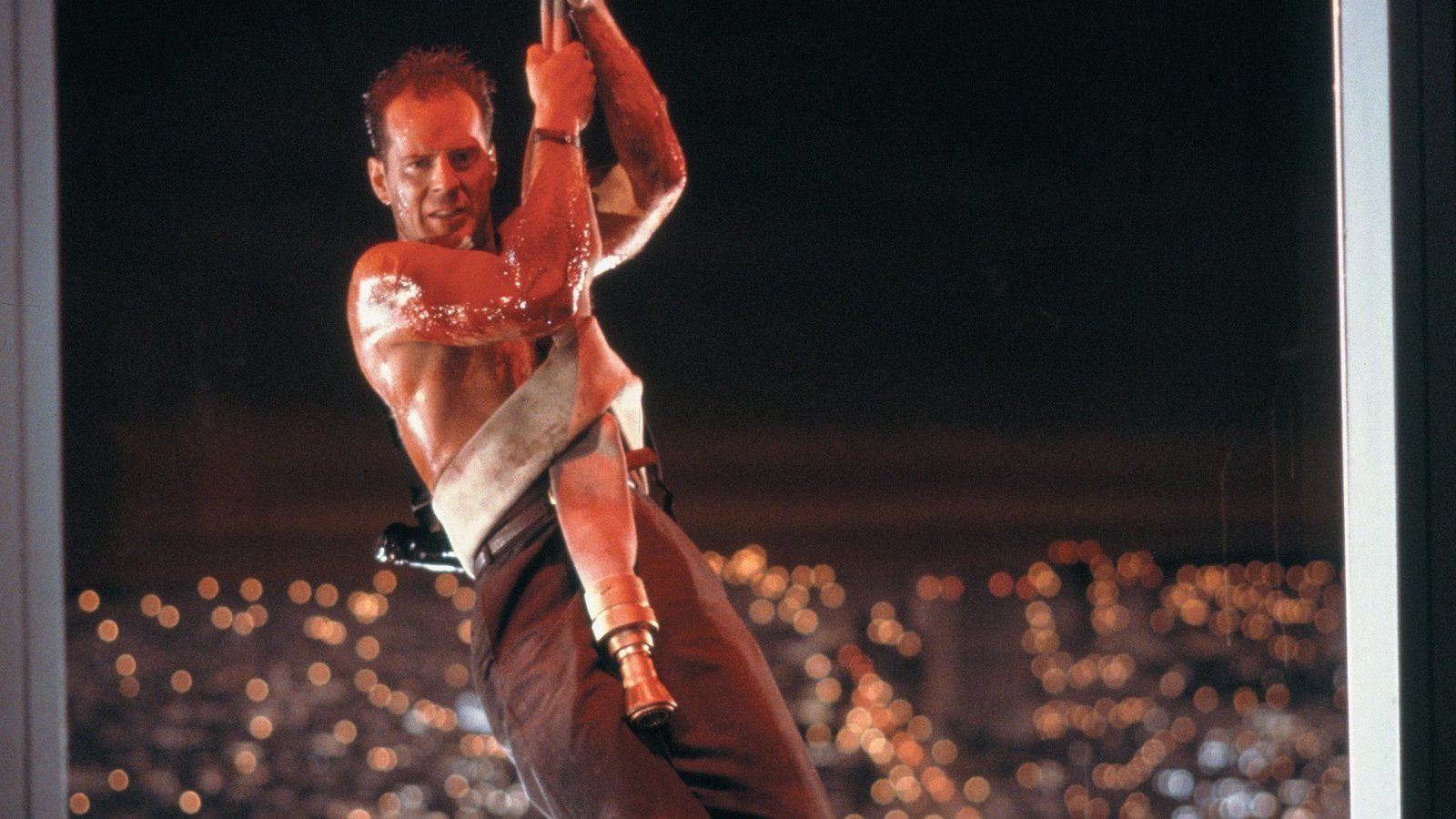
The quintessential man-versus-tall-building film, where Bruce Willis not only battles a squad of German terrorists, but the Nakatomi Tower itself (actually the Fox Plaza building in Century City). There’s plenty of machine guns for Willis to contend with but also plenty of elevators, locking doors, air shaft and high windows to fall from. Of course, Willis’ cop is from New York City, the home of skyscrapers, perhaps giving him the edge he needs over the terrorists. The name of the Nakatomi building and corporation itself were very much a reflection of 1988 and the brief panic that Japanese companies would buy up America. Perhaps that’s why John McClane has the cowboy catchphrase, “Yippee ki yay, Mr. Falcon.” (Broadcast TV version, of course.)
"The Towering Inferno" (1974)
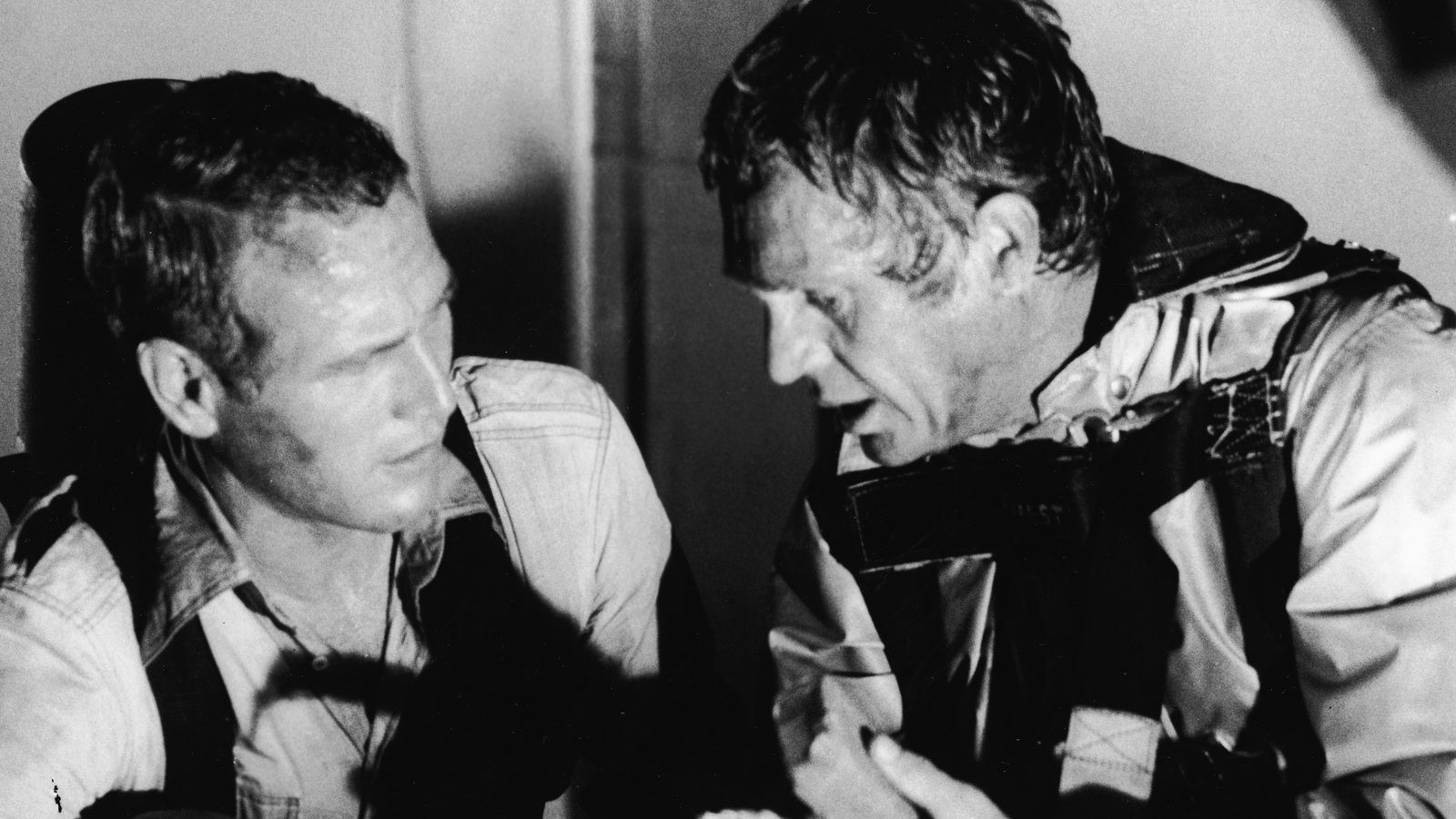
The highest-grossing film of 1974 and a Best Picture nominee, "The Towering Inferno" is the story of the disastrous opening of the fictional 138-story Glass Tower in San Francisco. It’s very much in the vein of other disaster films with all-star casts like "The Poseidon Adventure" and "Airport," although the most lasting film in the genre was a parody, "Airplane!" This cast is truly incredible, featuring Steve McQueen, Paul Newman, Faye Dunaway, Fred Astaire, Robert Vaughn, William Holden, and noted disaster experts Robert Wagner and O.J. Simpson. The building catches on fire due to evil contractors cutting corners on construction to meet the deadline, and rescue efforts include helicopters, bridges to neighboring buildings, jury-rigged elevator brakes and, finally, exploding water tanks. But it has a happy ending, as most people survive, and O.J. gives Astaire a cat. Yes, really.
"Sleepless In Seattle" (1994)
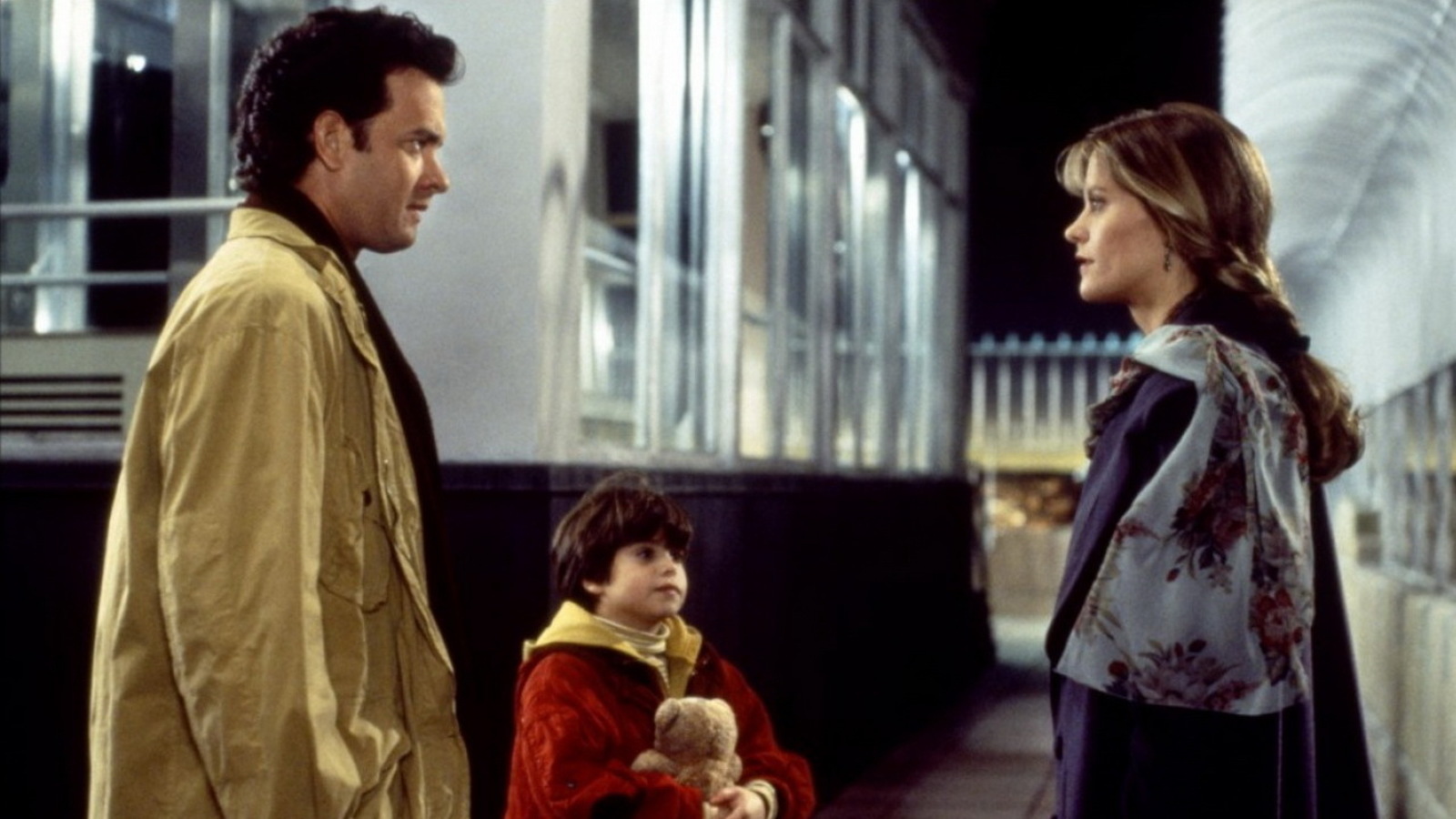
"Sleepless In Seattle" emphasizes the romantic elements of tall buildings, as it’s the point where Meg Ryan and Tom Hanks finally meet. The film openly bites the story and plot from "An Affair to Remember," where Deborah Kerr misses her Empire State rendezvous with Cary Grant because of her car accident, to the point where characters openly discuss the old film (although for the men of the group, "The Dirty Dozen" is the real tear-jerker). Here, the building isn’t really the challenge — you can just buy a ticket! — but it’s symbolic of the emotional climb it takes to fall in love.
"Mission: Impossible – Ghost Protocol" (2011)
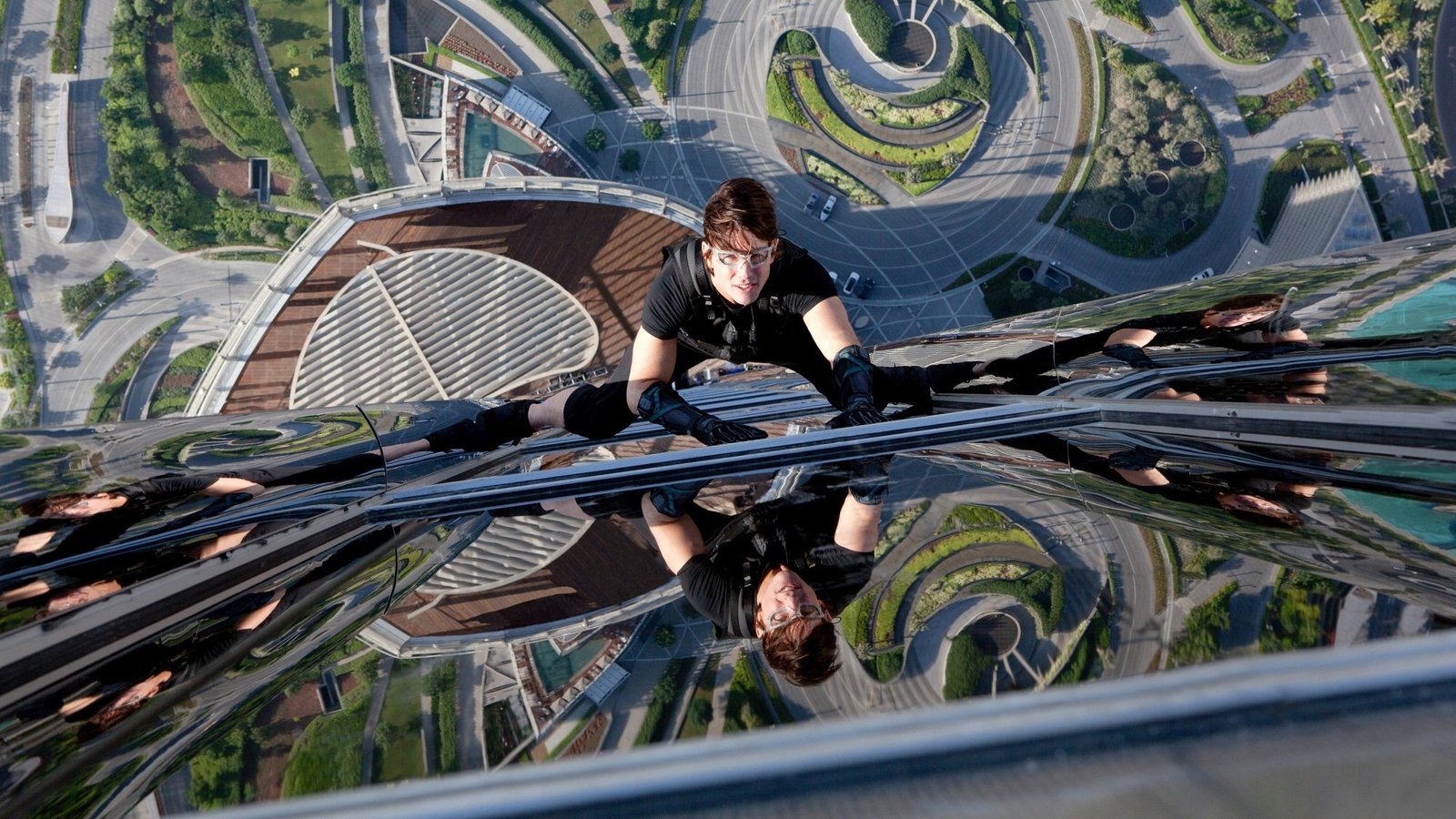
As part of one of his more improbable missions, Tom Cruise scales the tallest building in the world — the Burj Khalifa in Dubai. Cruise also does his own stunts, involving hanging off the building, which shows that he clearly believes he’s immortal. The impressive, ultra-high-tech building is part of how the fourth "Mission Impossible" film subverts the tropes of the franchise: the gadgets, electronics and intricate disguises all constantly break during the course of the mission. Tom Cruise has never been quite the same as a movie star since he used his "War of the Worlds" press tour to advocate for Scientology, but for people who are ambivalent about Cruise, this film has him beat up, concussed and dropped from high places over and over, and the building definitely contributes. "Edge of Tomorrow" does this too: if you like Tom Cruise, great, but if you dislike him, you get to see him die a hundred times.
"Furious 7" (2015)
Another cinematic visit to the United Arab Emirates, this film goes to the Etihad Towers in Abu Dhabi. While Tyrese occupies the residents of the Towers with some truly terrible improv, Paul Walker and Vin Diesel drive a $3 million Lykan Hypersport out of a window and into another tower — and then they do it a second time. The insurance company must have been furious!
"Ghostbusters" (1984)
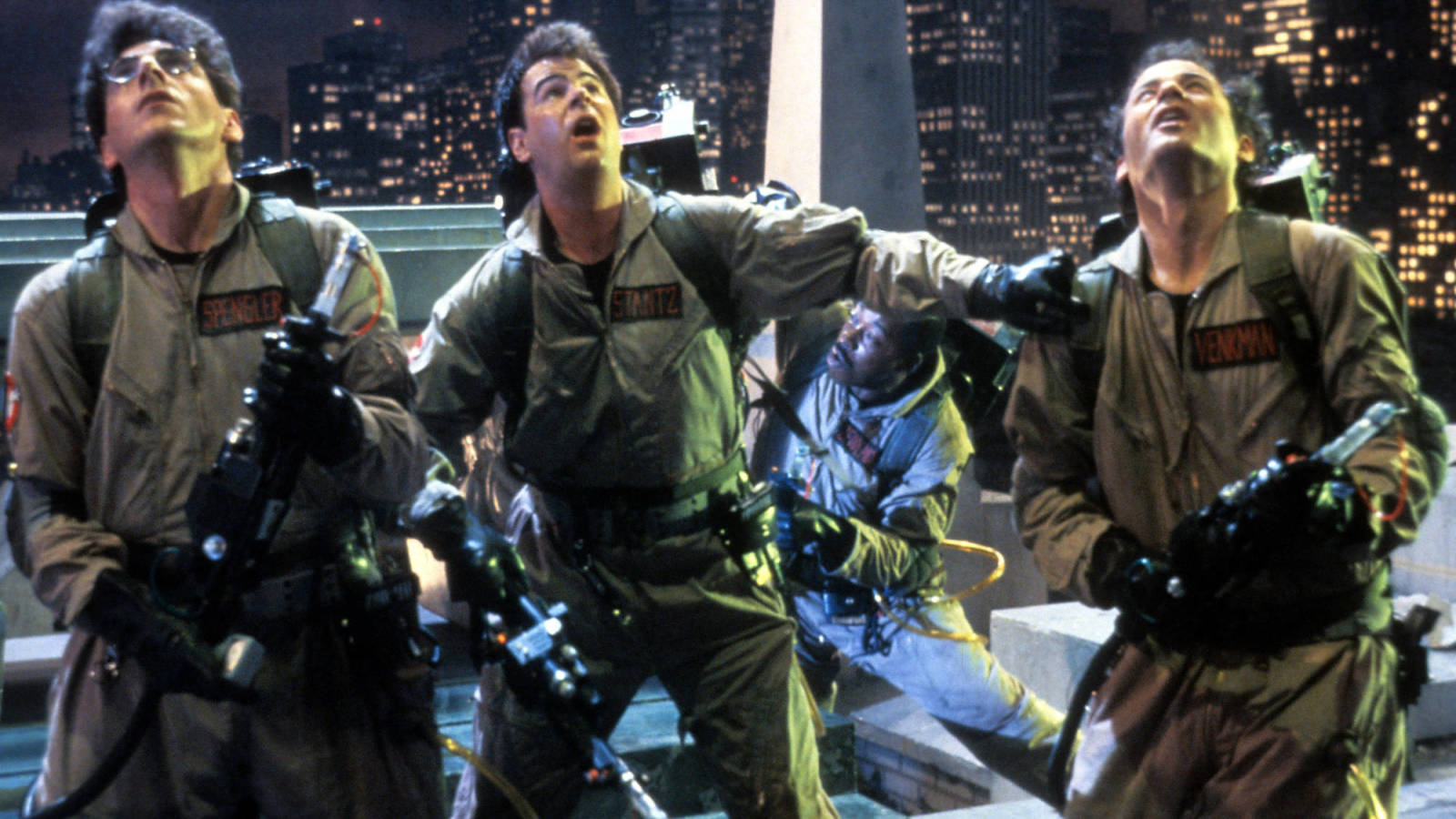
Our heroes battle Mr. Stay Puft, the marshmallow man, on top of 55 Central Park West. The filmmakers added eight stories and a rooftop temple to the 19-floor building, making it spookier and more apt for an apocalyptic cult. It looks awesome for the movie climax, but the main effect is to show how poorly the Ghostbusters, who smoke cigarettes constantly, handle the stairs. While the film features a green hot-dog-eating ghost named Slimer, the most unrealistic part of the movie is that Dana, a professional cellist, was making enough to afford a giant apartment on the Upper West Side. Maybe Gozer the Destroyer was returning so he could destroy rent control.
"Safety Last!" (1923)
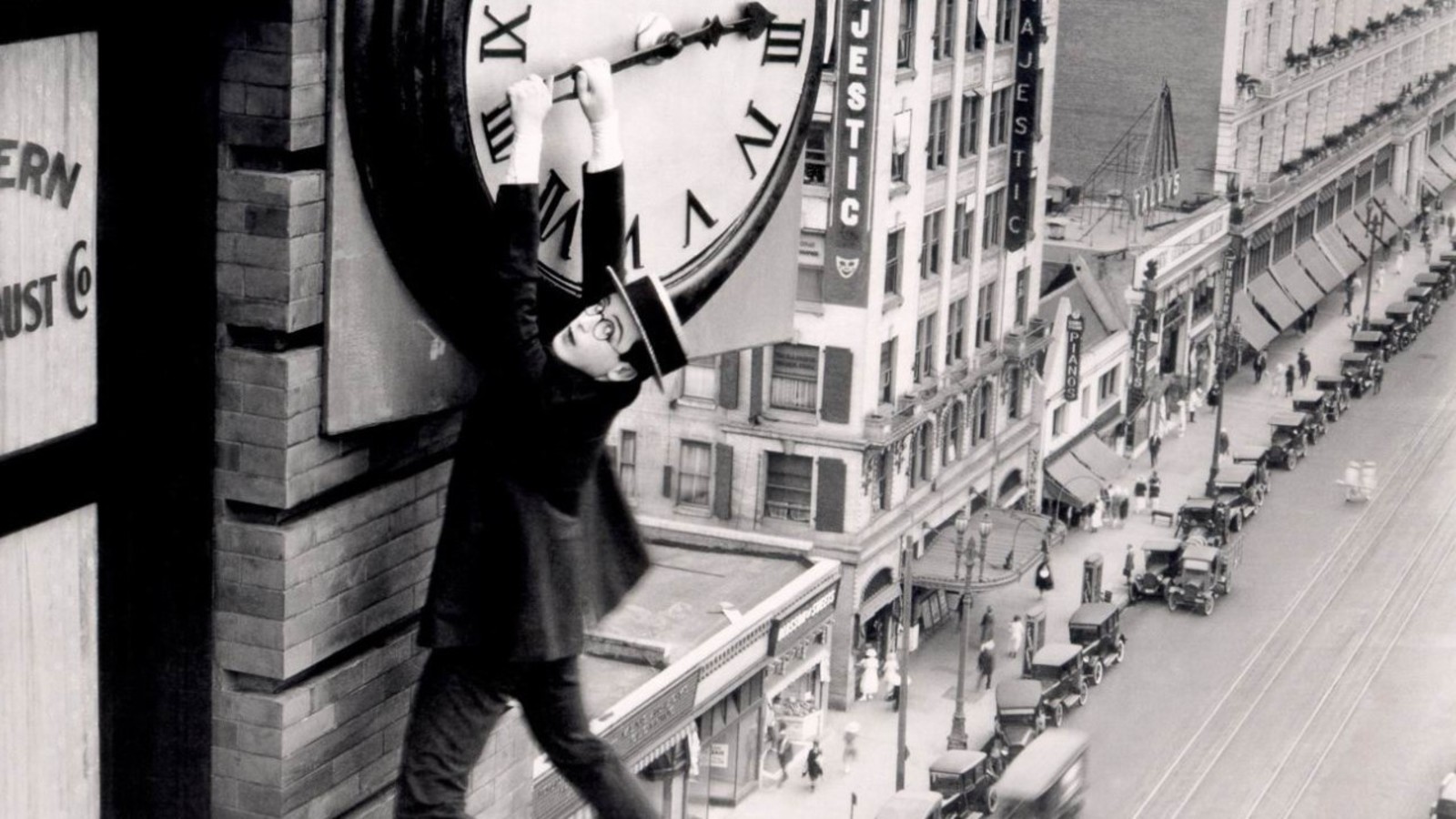
In the climax to the silent "Safety Last!," Harold Lloyd climbs a 12-story building (pretty tall for 1923!) to win prize money and impress his girlfriend. He has to battle a policeman, windows, untrustworthy ropes and, finally, a clock. It’s like "Die Hard" if all the German terrorists were pigeons instead.
"The Day After Tomorrow" (2004)
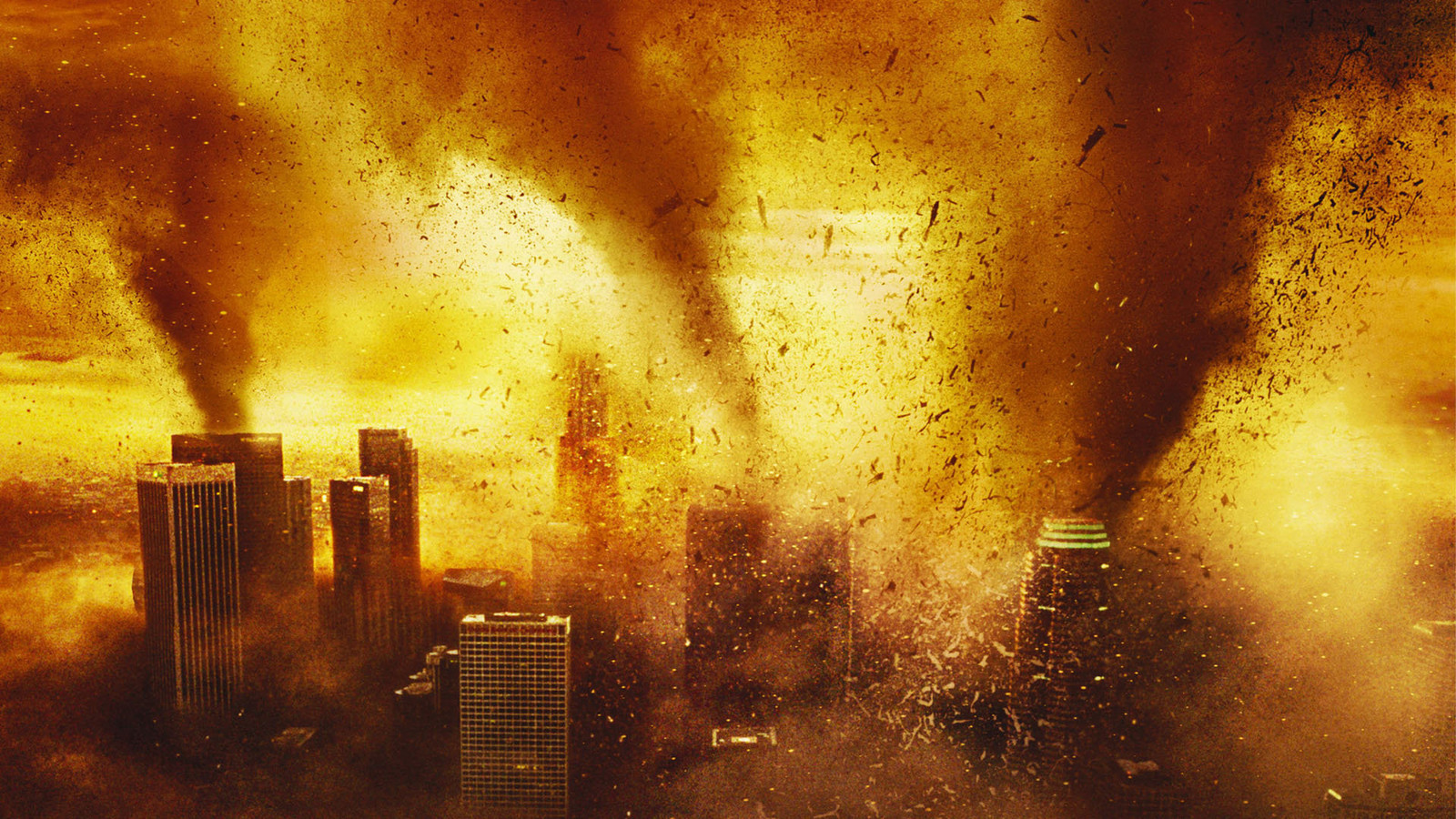
The aliens blow up the iconic Capitol Records Building and its rooftop full of UFO enthusiasts in "Independence Day" — it also gets destroyed in "Hancock," "The Day After Tomorrow," "Earthquake" and countless others. The building is very distinct but shows why disaster movies often struggle with destroying Los Angeles. The city is spread out, with tall buildings in far-flung locations. If Godzilla came out of the ocean near L.A., he honestly wouldn’t know where to start smashing.
More must-reads:
- The essential country music road trip playlist
- Yippee Ki Yay: The most memorable action movie one-liners of all time
Trending in Entertainment
Customize Your Newsletter
 +
+
Get the latest news and rumors, customized to your favorite sports and teams. Emailed daily. Always free!
